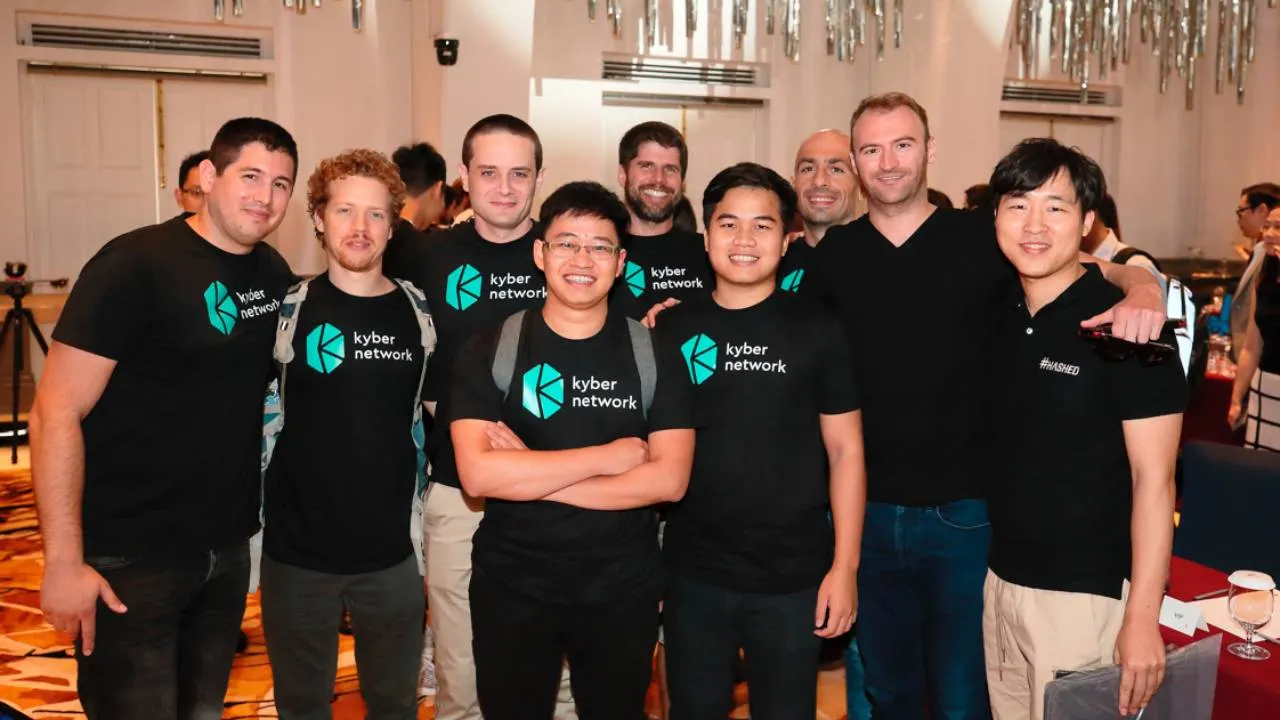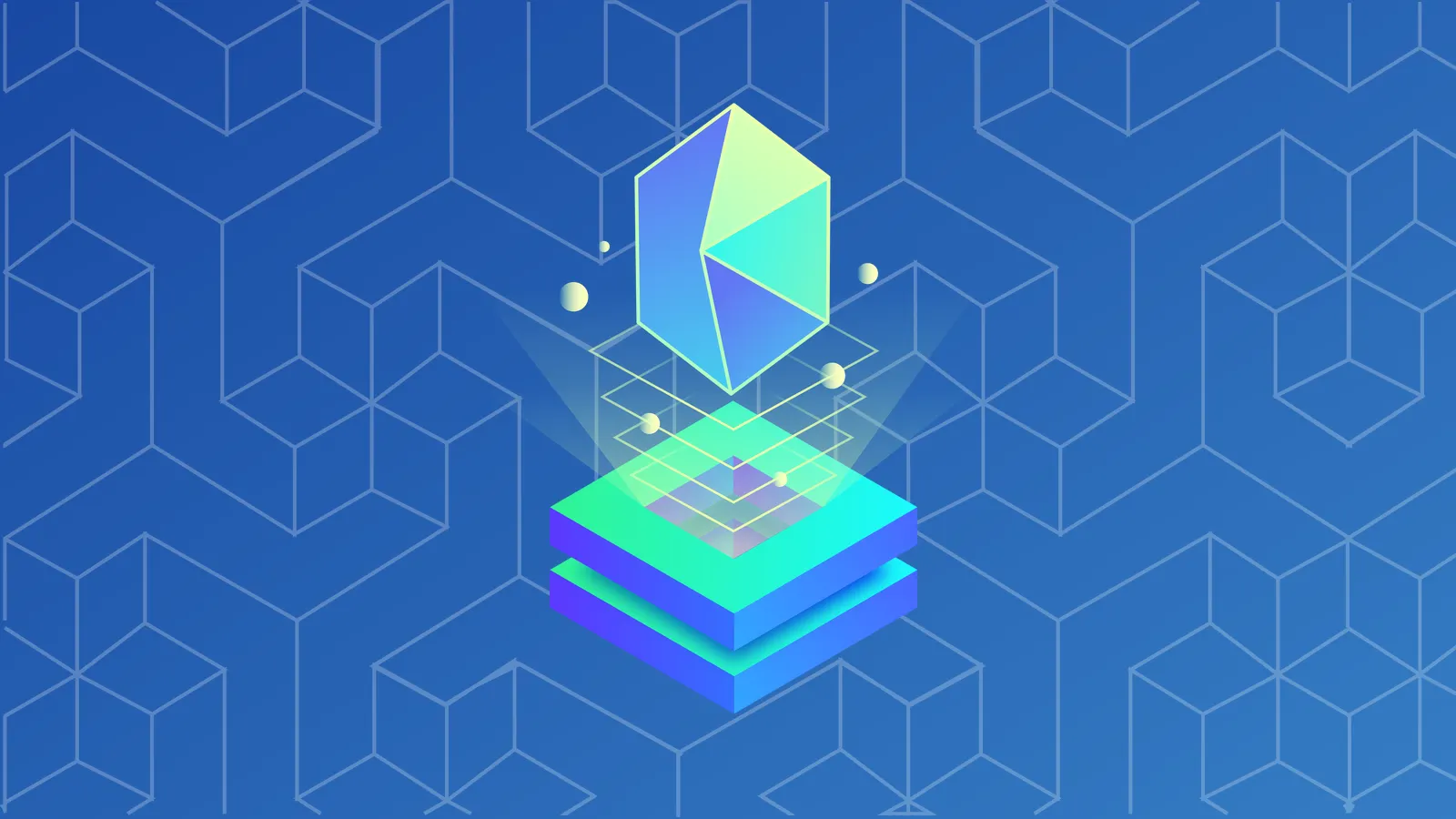In brief
- Kyber Network is a tool that allows anyone to swap tokens instantly without having to use exchanges.
- It allows vendors to accept different types of cryptocurrency while still being paid in their preferred crypto of choice.
- It's built primarily for Ethereum, but any smart-contract based blockchain can incorporate it.
In the crypto world, most communities and projects have their own token. Many times these tokens are required to use their own protocol. If you don’t already hold that token, you must go to an exchange and exchange your token for the required token–a cumbersome step. This is where Kyber Network comes in. The project wants to enable any token holder to easily convert one token to another with a minimum of fuss.
In this article, we explore how Kyber got started and its mission to provide seamless token swapping for an entire ecosystem of decentralized finance (DeFi) applications on Ethereum.
What is Kyber?
At its core, Kyber is a decentralized way to exchange ETH and different ERC20 tokens instantly–no waiting and no registration needed. To do this Kyber uses a diverse set of liquidity pools, or pools of different crypto assets called “reserves” that any project can tap into or integrate with.
A typical use case would be if a vendor allowed customers to pay in whatever currency they wish, but receive the payment in their preferred token. Another example would be for dapp users. At present, if you are not a token holder of a certain dapp you can't use it. With Kyber, you could use your existing tokens, instantly swap them for the dapp specific token and away you go.
All this swapping happens directly on the Ethereum blockchain, meaning every transaction is completely transparent.
Who Invented Kyber?
Kyber’s founders are Loi Luu, Victor Tran, Yaron Velner—CEO, CTO, and advisor to the Kyber Network.

Did you know?
Kyber’s native token, Kyber Network Crystals (KNC), are named after the crystals in Star Wars used to power lightsabers.
What’s so special about Kyber Network?
Kyber's mission has always been to integrate with other protocols so they’ve focused on being developer-friendly by providing architecture to allow anyone to incorporate the technology onto any smart-contract powered blockchain. As a result, a variety of different dapps, vendors, and wallets use Kyber’s infrastructure including Set Protocol, bZx, InstaDApp, and Coinbase wallet.
Besides, dapps, vendors, and wallets, Kyber also integrates with other exchanges such as Uniswap – sharing liquidity pools between the two protocols.
Did you know?
Limit orders—common on other exchanges, but not for a liquidity pool exchange such as Kyber—were recently added to the protocol. Limit orders on Kyber allow users to set a specific price in which they would like to exchange a token instead of accepting whatever price currently exists at the time of trading. However, unlike with other exchanges, users never lose custody of their crypto assets during limit orders on Kyber.
What else is different about it?
The Kyber protocol works by using pools of crypto funds called “reserves”, which currently support over 70 different ERC20 tokens. Reserves are essentially smart contracts with a pool of funds. All reserves are controlled by different parties with different prices and levels of funding. Instead of using order books to match buyers and sellers to return the best price, the Kyber protocol looks at all the reserves and returns the best price among the different reserves. Reserves make money on the “spread” or differences between the buying and selling prices.
How are KNC tokens produced?
The native token of Kyber is called Kyber Network Crystals (KNC). All reserves are required to pay fees in KNC for the right to manage reserves. The KNC collected as fees are either burned and taken out of the total supply or awarded to integrated dapps as an incentive to help them grow.
How do you get hold of KNC tokens?
Kyber Swap can be used to buy ETH directly using a credit card, which can then be used to swap for KNC. Besides Kyber itself, exchanges such as Binance, Huobi, and OKex trade KNC.
What can you do with Kyber?
The most direct and basic function of Kyber is for instantly swapping tokens without registering an account, which anyone can do using an Etheruem wallet such as MetaMask. Users can also create their own reserves and contribute funds to a reserve, but that process is still fairly technical one–something Kyber is working on making easier for users in the future.
What is the KyberDAO?
In July 2020, Kyber Network launched the Katalyst network upgrade and introduced the KyberDAO, a decentralized autonomous organization (DAO) that allows KNC holders to participate in the governance of Kyber Network.
Katalyst and @KyberDAO are now LIVE! 🚀This milestone marks the beginning of an exciting era for Kyber, with a new decentralized governance system and technical improvements that will enhance liquidity for #DeFi !
Details: https://t.co/ulWRkDsKO4
Visit: https://t.co/BS41TCnFk2 pic.twitter.com/hE4fiquZsF— Kyber Network (@KyberNetwork) July 7, 2020
KNC holders can now stake their tokens to the KyberDAO, which will allow them to vote on various proposals that concern the development and operation of Kyber Network. Stakers only receive full staking rewards if they vote on all the proposals during each epoch—each of which lasts around two weeks. Several third-party staking providers automate this process.
KNC stakers can currently expect an annual reward of ~12.79%, but this can vary based on the trading volume of Kyber Network (among other things).
The future of Kyber Network
The goal of Kyber in the coming years is to solidify its position as a one-stop solution for powering liquidity and token swapping on Ethereum.
The platform has also seen its utility as a DeFi protocol expand in recent months, driving trading volumes up and prompting demand for KNC to increase four-fold in the last six months. However, due to concerns about high Ethereum gas prices (and hence transaction fees), Kyber Network is currently looking at different layer-2 protocols to work with, to help make the platform cheaper and more efficient to use, but this work is still at an early stage.
For now, Kyber Network plans to reduce gas fees using a technique known as reserve routing and is pursuing a permissionless token listing structure.


